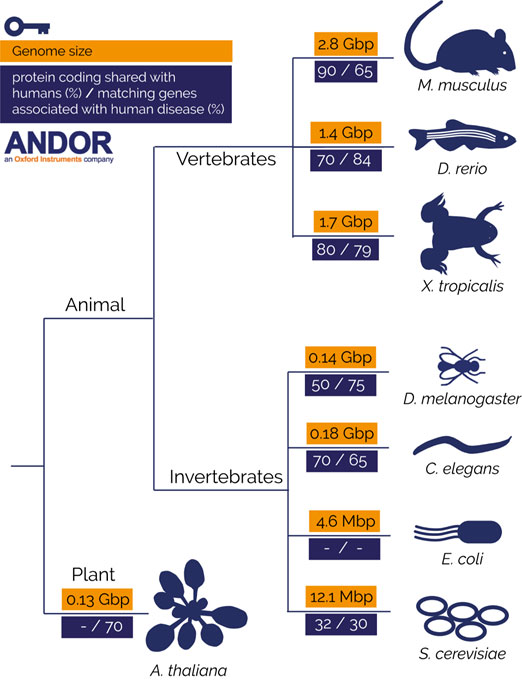Resources
 Part of the Oxford Instruments Group
Part of the Oxford Instruments Group
Expand
Collapse
 Part of the Oxford Instruments Group
Part of the Oxford Instruments Group

Figure 1: Diagram depicting model organisms discussed in our article series, including genome size, the percentage of protein coding shared with humans and the percentage of matching genes associated with human disease (where data is available).
Some organisms are better subjects for research in areas such as developmental biology, genetics or neuroscience studies and are commonly termed “model organisms”. In this series we look at some of the most widely used model organisms. We outline the following – what it is about them that makes them so useful for study? We also look at what research areas they are typically used for and provide an overview of some of the most recent findings from this research.
The model organisms discussed in this series are not introduced in any significant order and cover a wide range of areas of study and indeed, organism type. A common theme of the organisms discussed here is that they are all sequenced, demonstrating understanding at the genetic level. However, the quality of the sequence varies and is undergoing continuous improvement. See our separate series on biological research models covering simple cell lines through to organoids.

Figure 1: Diagram depicting model organisms discussed in our article series, including genome size, the percentage of protein coding shared with humans and the percentage of matching genes associated with human disease (where data is available).
Date: February 2019
Author: Dr Alan Mullan & Dr Aleksandra Marsh
Category: Application Note
